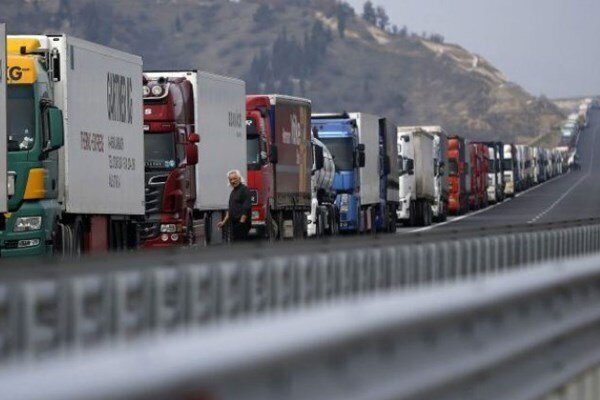Monthly transit of goods via Iran increases 61% yr/yr

TEHRAN- Transit of goods through Iran rose 61 percent in the tenth month of the current Iranian calendar year (December 22, 2021-January 20, 2022), as compared to the same month of the past year, the spokesman of Islamic Republic of Iran Customs Administration (IRICA) announced.
Ruhollah Latifi said that over 1.07 million tons of commodities were transited via Iran in the mentioned month.
Earlier this month, IRICA Head Alireza Moghadasi said, “Based on the policies of the resistance economy and the fifth and sixth national development plans of the country, every year we should have witnessed a 10-percent growth in transit via the country, which unfortunately in recent years, after proper growth, we had a decreasing trend in transit.”
“In the Iranian year 1393 (March 2014-March 2015), the transit of goods via Iran reached more than 13 million tons, after which not only did we not have growth in this due, but in 1398 and 1399, this amount reached 7.5 million tons”, he added.
“Fortunately, transit has returned to its growth path in 1400 [the present Iranian year], and is expected to reach 12.4 million tons by the end of this year”, Moghadasi further stated.
Iran is one of the countries that have a special status in trade and transit relations due to its strategic location and special geography, as the country is the passage of several important international corridors.
In the south of Iran is the Persian Gulf, which is home to the world's major oil-producing countries. This region is considered the energy bottleneck of the world.
In the north of Iran is the Caspian Sea, which is the best bridge between Iran, Russia, Kazakhstan, Turkmenistan, and Azerbaijan and can play an important role in trade between these countries.
The country, on the other hand, borders Iraq, Turkey, Pakistan, and Afghanistan to the west and east.
In other words, it can be said that Iran communicates with 15 countries through land and water borders, and at the same time it can act as a bridge between these countries (with each other and other parts of the world).
These countries have a large population and high income which can be effective as a factor in the development of transit and trade in the region.
The connection of Central Asian countries with the Persian Gulf, as well as the establishment of trade relations between East Asia and European countries through Iran, is very cost-effective so that many of these countries seek to establish such relations through Iran.
This status has provided the country with many opportunities and by optimal use of these opportunities through the expansion of the transportation network and reliable and efficient communication, Iran can achieve foreign currency earnings and economic growth, and make transit revenue a suitable alternative to oil export while improving its strategic position in the region.
Considering its geographical location, Iran can play a significant role in the transit of goods in the region and benefit a lot from its status in this due. To take full advantage of its location for transit, the country has many plans underway and, on the agenda, to boost its transit capacity.
Some of these plans include developing Shahid Rajaee Port, Iran’s largest and most-equipped container port in the south, and also Chabahar Port in the southeast of the country, connecting the ports to the railway network, development of transit via railway, and also some customs measures such as improving transit procedures in the customs offices.
MA/MA
